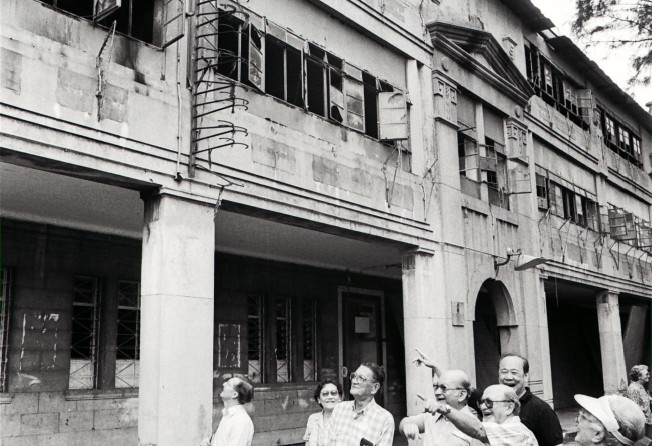
How Hong Kong’s Covid-19 quarantine camps could be repurposed after the pandemic – World War II history offers examples
- China recently stepped in to build Covid-19 quarantine camps to help Hong Kong during its fifth wave of infections
- These camps will be put to other uses after the pandemic, just as the city’s World War II camps were repurposed

Desperate times, the truism wearily maintains, call for desperate measures. Hong Kong has finally proved to be no exception, as the Covid-19 pandemic trudges inexorably into its third year globally and, locally, enters its fifth (and almost certainly not final) wave.
In recent weeks, Chief Executive Carrie Lam Cheng Yuet-ngor has repeatedly invoked stirring wartime analogies, and other steel-spined, resolute metaphors, in the city’s ongoing “fight” against the virus. This recently discovered “Blitz Spirit”, belatedly embraced by Hong Kong’s own general officer commanding and her cadre of peacetime-promoted, depot-grade staff officers, must be welcomed.
Especially so, after the serially disheartening succession of false starts, shattered hopes and broken promises that Hong Kong has experienced in recent years, followed by the “phoney war” interlude, when precious little vital preparation against a much stronger enemy lurking just beyond the gates was even attempted.
One can only wish them well, and fervently hope that, at long last, Hong Kong’s long-suffering people can feel – as British prime minister Winston Churchill memorably declaimed after Field Marshal Bernard Montgomery’s decisive North African victory at El Alamein in 1942 – “This is not the end. It is not even the beginning of the end. But it is, perhaps, the end of the beginning.”

When menaced by “hostile external forces” such as Omicron, no beleaguered wartime commander – even one of Lam’s unquestionable competence and imagination – can achieve much without the unremitting logistical support of reliable allies.
As we have witnessed, the sheer scale and diversity of assistance Hong Kong has recently received from mainland China is extraordinary. As if an all-powerful wizard’s wand had been suddenly waved, sizeable expanses of previously impossible-to-find vacant land – all in out-of-the-way locations – were identified and made available, virtually overnight.
Just as miraculously, frenzied bursts of construction work caused extensive tracts of prefabricated, purpose-built quarantine facilities to appear like magic, then be immediately pressed into service. Where would Hong Kong possibly be now – right-thinking persons must ask themselves – without the motherland’s resolute help when their local leaders struggled so helplessly against the incoming viral tides?
As with everything else bestowed over the years, the population must be humbly grateful.
Newly constructed emergency camps can also be repurposed for other uses, when their original function inevitably becomes redundant; local history offers examples.

In 1938, as the Sino-Japanese war intensified, and enemy advances spread rapidly into south China, the Hong Kong government built temporary refugee camps at the eastern end of Argyle Street, in northern Kowloon, Ma Tau Chung, near Kowloon City, and North Point, on Hong Kong Island.
Accommodation and quarantine huts, kitchen and ablution facilities and exercise areas were built within a wired-off enclosure. High fences and watchtowers prevented any unauthorised departures. Nationalist soldiers who had escaped into Hong Kong were also interned in these camps before repatriation into Free China.
These facilities were repurposed as prisoner-of-war camps after the Japanese capture of Hong Kong in 1941. North Point Camp held Canadian soldiers, along with Royal Navy personnel, from early 1942 until September 1942; inmates were then relocated to Sham Shui Po Camp, in Kowloon.

Argyle Street Camp was used to segregate officers from other ranks, after a series of escapes at Sham Shui Po Camp, and operated from April 1942 to May 1944. Ma Tau Chung – which also contained a civilian internment section known as Ma Tau Wai – was closed in 1944; inmates were redistributed elsewhere.
Argyle Street Camp remained in use decades later; Vietnamese boatpeople were detained there in the 1980s.
All these camps have now been demolished; memorial plaques at key locations would offer a lasting reminder of earlier times.